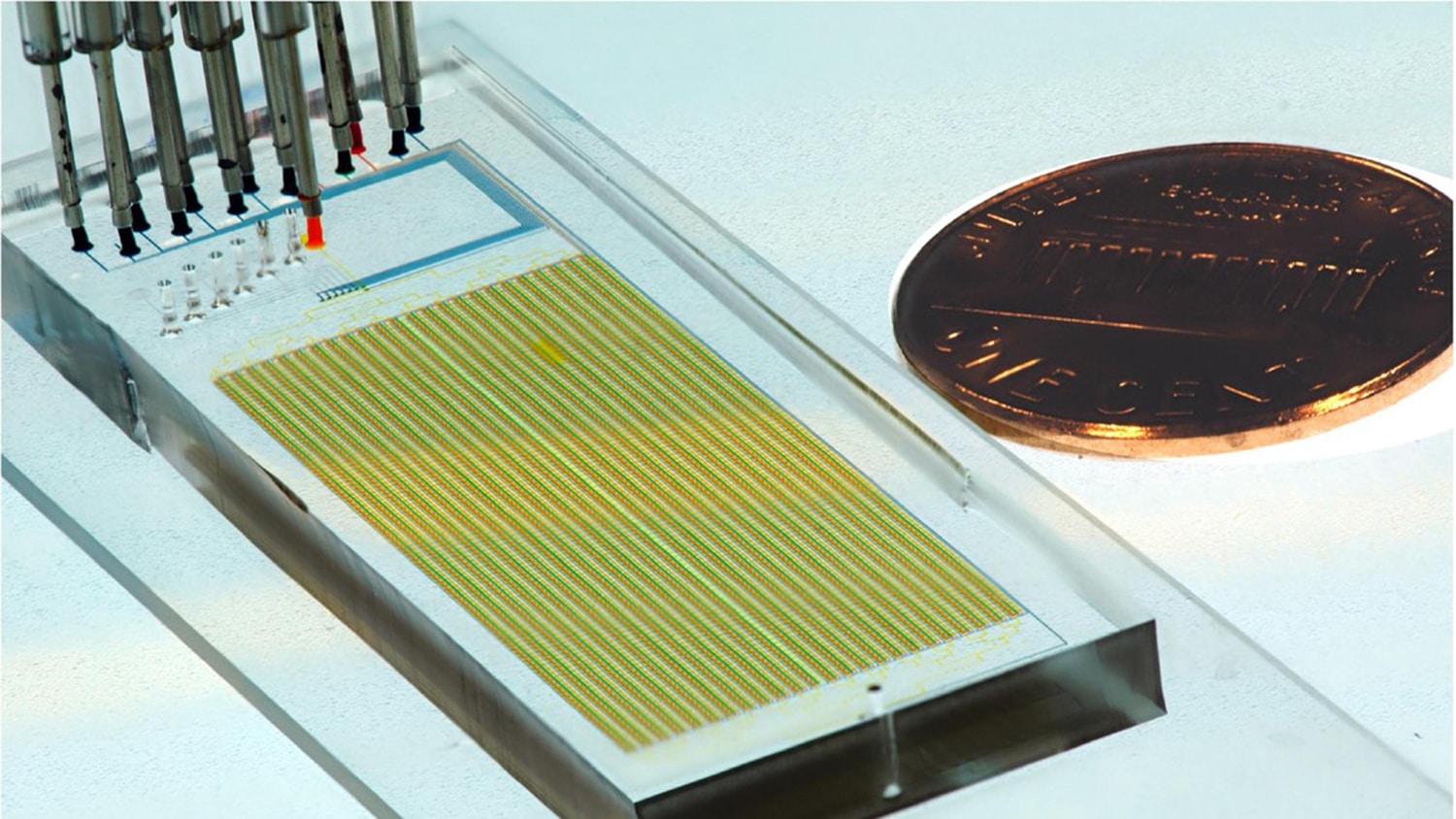
Antibody testing can be a powerful tool for tracking the spread of SARS-CoV2 infections. Because antibodies can take several days to weeks to develop, antibody tests can’t detect active infections, but they can help determine what proportion of communities have been infected with the virus in the past.
These antibody tests usually depend on expensive reagents and require larger quantities of blood. Also, some of the tests deliver inaccurate results.
Scientists from EPFL, UNIGE and HUG have developed a highly accurate test that can analyze hundreds of samples simultaneously. The test uses minute quantities of reagents and single drops of blood.
The most remarkable thing about this new test is that you can do many tests at once with minimal reagents. Consisting of a complex network of tiny tubes carved into a plastic chip about the size of a USB stick, the test can analyze up to 1024 samples at once.
During the experiment, scientists feed individual blood samples and test reagents through the channels of this ‘microfluidic’ chip. If antibodies against SARS-CoV-2 are present in a blood sample, a molecule generates a signal that can be detected as a fluorescent glow under a microscope.
The test never detected antibodies against the virus in samples from people who had not been infected with SARS-CoV-2.
Sebastian Maerkl said, “running hundreds of essays on a single platform means that a person can perform more assays in less time, with potential cost savings on human labor. If you do a back-of-the-envelope calculation and consider everything, including salary costs and the cost of reagents, it is about 0.5 Swiss francs per assay. It’s almost negligible.”
Isabella Eckerle, a professor at UNIGE Faculty of Medicine and Medical Coordinator of the UNIGE-HUG Centre for Emerging Viral Diseases, said, “This test very attractive for large-scale epidemiological studies. It could even be used for remote geographic regions that lack sufficient laboratory capacity, for example, to conduct seroprevalence studies in Sub-Saharan Africa.”
“The small amount of blood and the collection by a finger prick, which is quick and almost painless, also makes this method very attractive for use in children and offers a unique opportunity to assess seroprevalence rates in daycare centers or kindergartens.”
Journal Reference:
- Zoe Swank et al. A high-throughput microfluidic nanoimmunoassay for detecting anti–SARS-CoV-2 antibodies in serum or ultralow-volume blood samples. DOI: 10.1073/pnas.2025289118
Continue reading New COVID-19 test can analyze more than 1,000 samples at once on Tech Explorist.
0 comments:
Post a Comment